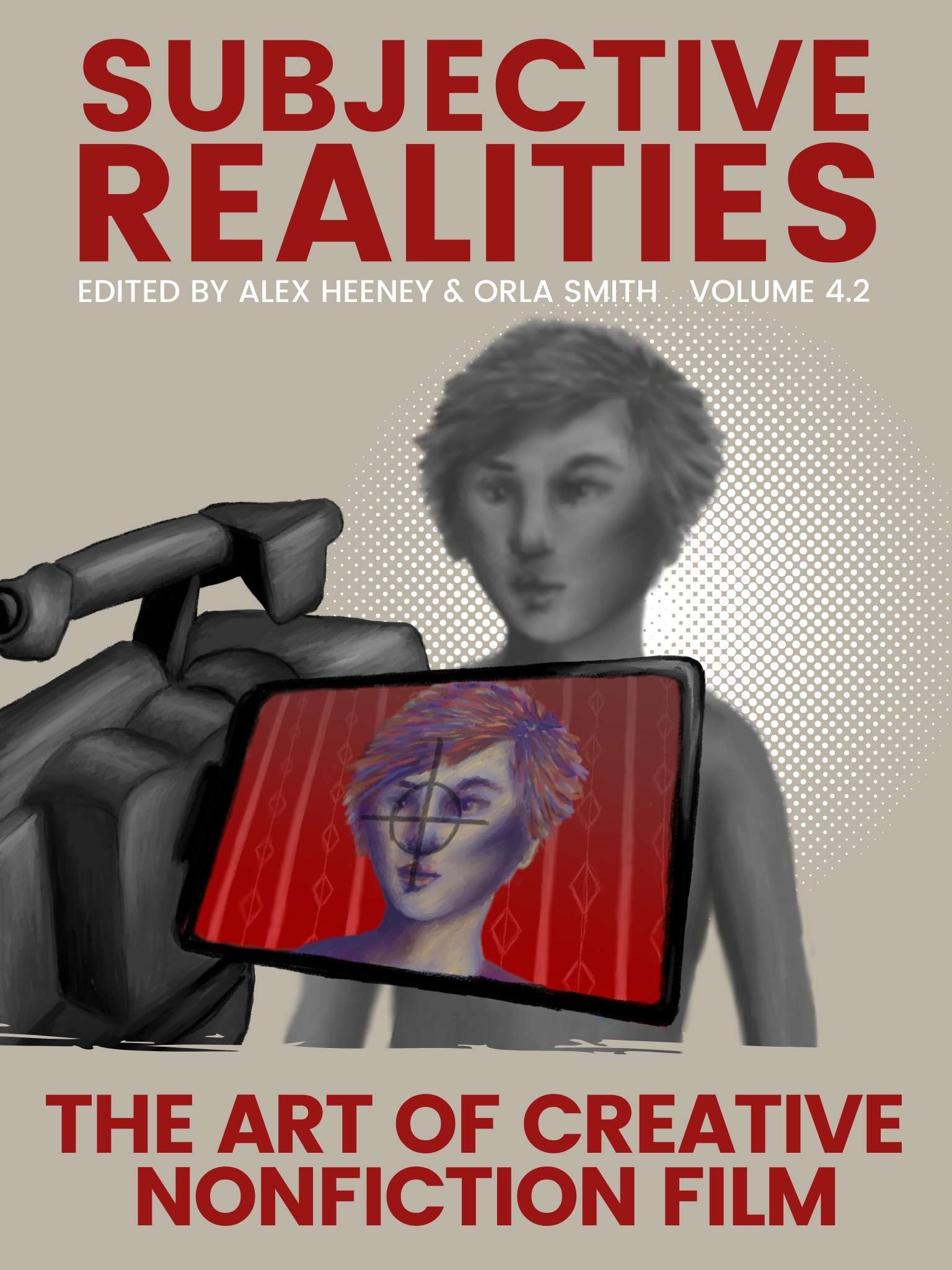Procession, the latest from documentary filmmaker Robert Greene, is now on Netflix. Here’s why he’s calling it the culmination of his career to date.
This is an excerpt from the ebook Subjective realities: The art of creative nonfiction. Get your copy here.
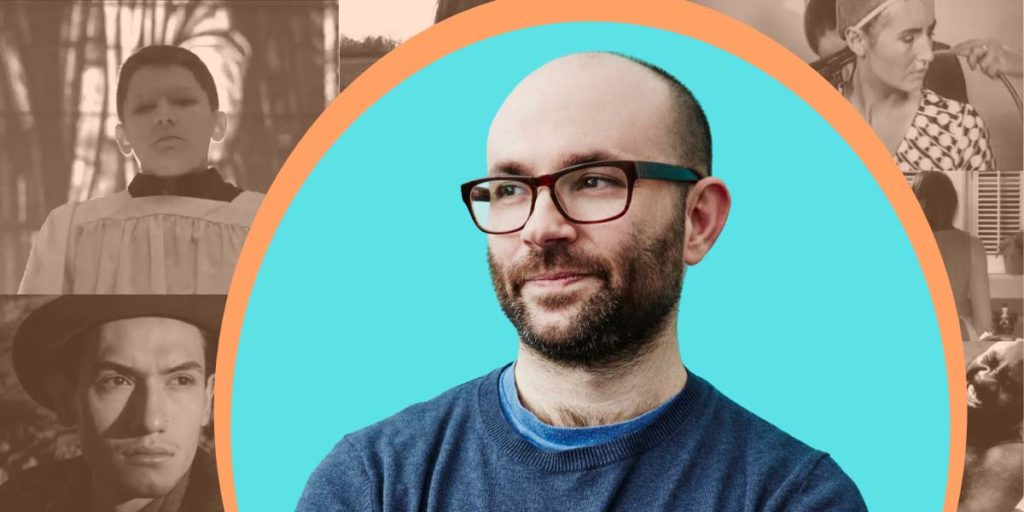
Discover one film you didn’t know you needed:
Not in the zeitgeist. Not pushed by streamers.
But still easy to find — and worth sitting with.
And a guide to help you do just that.
In Robert Greene’s documentary Procession, now on Netflix, a group of middle-aged male survivors grapple with the abuse they faced as children, at the hands of Catholic priests. Earlier this year, Seventh Row published an ebook called Subjective realities: The art of creative nonfiction film, which featured a section titled ‘Does filmmaking have the power to heal?’. In that section, we discuss films such as Still Processing (Sophy Romvari, 2020) and Evelyn (Orlando von Einsiedel, 2018, also on Netflix), which showcase the filmmaker attempting to process grief through the act of filmmaking. When I saw Procession, partway through putting together that section, I knew instantly that it was a revelatory addition to the conversation around cinema’s therapeutic powers.
“I don’t use the word healing,” Greene clarified when I spoke to him about Procession. “Healing is possible, certainly, but especially with the guys that we worked with in Procession, they’re not looking for healing. They’re looking for meaning, and they’re looking for help.” In the film, Greene works collaboratively with six survivors of childhood sexual assault, and enlists a drama therapist, Monica Phinney, to help ensure the process is helpful, rather than retraumatising. Phinney describes her work as “the intentional use of roleplay to achieve a therapeutic goal.” To that end, each man writes a short script centred around a real or imagined scene from their childhood, and sets about committing it to film. Sometimes, that even means returning to the precise location of their trauma. It’s an emotional experience, but one that helps them take steps to processing the pain in their pasts.
Greene describes Procession, as “the culmination of [his] work;” I have to agree with his sentiment. Certainly, watching all of his films chronologically, leading up to Procession, was a striking experience. Collectively, they paint a portrait of Greene’s progression as an artist and as a person over the past decade, as he’s grown to realise the power of filmmaking as a therapeutic process, and thus gained a clearer understanding of why he wants to make films in the first place.
“When you think about filmmaking as a healing process, I realised that that’s what the performative aspect that I was interested in from the beginning is ultimately really about,” Greene mused to me. A few years ago, his sister-in-law, Mary Davis, asked him to read The Body Keeps the Score: Brain, Mind, and Body in the Healing of Trauma by Bessel van der Kolk. The book discusses how trauma is stored in the body, and how physically acting out your feelings can unfurl trauma beyond the limits of talk therapy. It was a revelation for Greene, who suddenly understood how the process of his subjects performing for the camera was, in some ways, therapeutic.
This revelation was much needed after making his Actress (2014) follow-up, Kate Plays Christine (2016), a captivating film (in my opinion) that Greene himself has complicated, difficult feelings about. In the film, Kate Lyn Sheil prepares to play the role of Christine Chubbuck in a fake film that Greene is shooting about Chubbuck’s life and death. Chubbuck’s story is a tragic one: in the ‘70s, she was an isolated, depressed news reporter who shot herself live on air while giving a news report. Sheil struggles to get into the head of this unknowable woman, and Greene’s film struggles with the question of whether it’s even ethical to try to do so. The film is densely packed with ideas about performance and the ethics of storytelling. It’s also a nihilistic film that ends on the sentiment that filmmaking is (or at least can be) exploitative, leering, even pointless.
That’s not a viewpoint that Greene still holds. He told me, “Storytelling might be corrupt, but making art together can be very healing. Both things can be true, but I want to make the world work better.” This change of heart came after making Bisbee ‘17 (2018), in which Greene and his crew visit Bisbee, a remote mining town in Arizona where, in 1917, 1,200 striking immigrant miners were illegally deported. On the 100th anniversary of the deportation, he gets the town together to reenact that pivotal event in their collective history. Along with the film crew, the people of Bisbee work through the historical trauma of the deportation, and act out tensions between the immigrant and non-immigrant populations of Bisbee that still exist today. It’s a fascinating experiment, but it’s also, as one of the townspeople says in the film, “the largest group therapy session [they’ve] ever been to.”
Greene still wasn’t fully aware that his subjects were using the filmmaking process as a therapeutic tool when he made Bisbee ‘17, but that idea crystalised for him when he read The Body Keeps the Score, which led to making Procession. Procession is a deliberate act of filmmaking therapy. In the film, Greene brings together six adult survivors of abuse at the hands of Catholic priests. These survivors have been dealing with intense trauma for decades. We watch as they write and shoot short films based on traumatic memories, aided by a licenced drama therapist, and observe how this process helps them cope with their trauma in concrete, practical ways. Procession is the culmination of Greene’s career thus far, because it sees him consciously using filmmaking to help his subjects, something he’d been subconsciously thinking about for years.
What follows is an excerpt from my career profile of Greene in Subjective realities, which discusses how the arc of his career has poignantly brought him to Procession, a film that not only believes in the constructive potential of filmmaking, but demonstrates it. It’s one of two interviews with Greene that features in Subjective realities (the other focuses on the way his films complicate the line between fiction and reality).
Get your copy of Subjective realities: The art of creative nonfiction here.
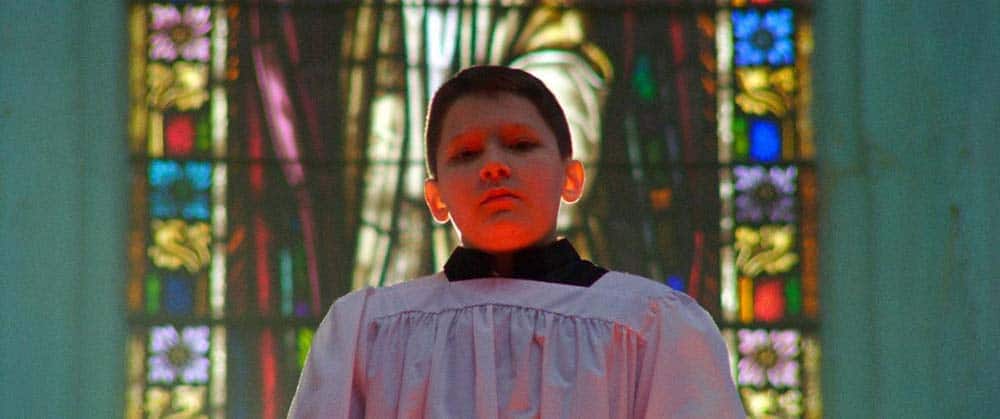
Seventh Row (7R): There’s a running interest in the power of performance throughout your films. Where does that come from?
Robert Greene: When [Kati with an I] came out, there was a review in IndieWire where Eric Kohn said that Kati gives one of the best performances of the year. I realised that what I was actually investigating with the camera was [Kati] performing being an adult and the sadness of that, because most of the people in the audience know that she’s performing being an adult, and she has no idea what’s coming. It wasn’t just, oh look, she’s acting. It was, what does the acting say? Watching her act is about dreams. She’s acting out her dream. She’s acting out a fantasy of adulthood. We find out [towards the end of the film] that none of that’s going to happen. Performance in a documentary, then, is not a goal. It’s a lens that takes you into some other, deeper meaning.
That has carried through the rest of my work. How do you activate that way of seeing the images so that it becomes more than just documenting a teenager? That’s not interesting. But documenting someone who’s dreaming? That’s different.
7R: With your early films, what kinds of conversations would you have with the participants before shooting?
Robert Greene: It would be things like, “Alright, Kati, we’re going to film for three days. What are you doing [in those three days]?” And Kati would say, “Well, we’re going to do this and this and this.” And I was like, “I have an idea. You should definitely go to the mall.” Or, “Did you say there’s a party?” “Well, I’m not that close friends [with them].” “Well, can you invite friends, because a pool party a couple days before graduation — doesn’t that sound awesome?” You see that in Kati with an I: these movie moments.
I wasn’t good enough at the time, or aware enough, to be able to say, “Kati, what do you most want to do?” That’s what I would do differently. “If you could fantasy write your final three days [of high school], what would those look like?” And then the film would ultimately be about that fantasy. I had to learn that skill.
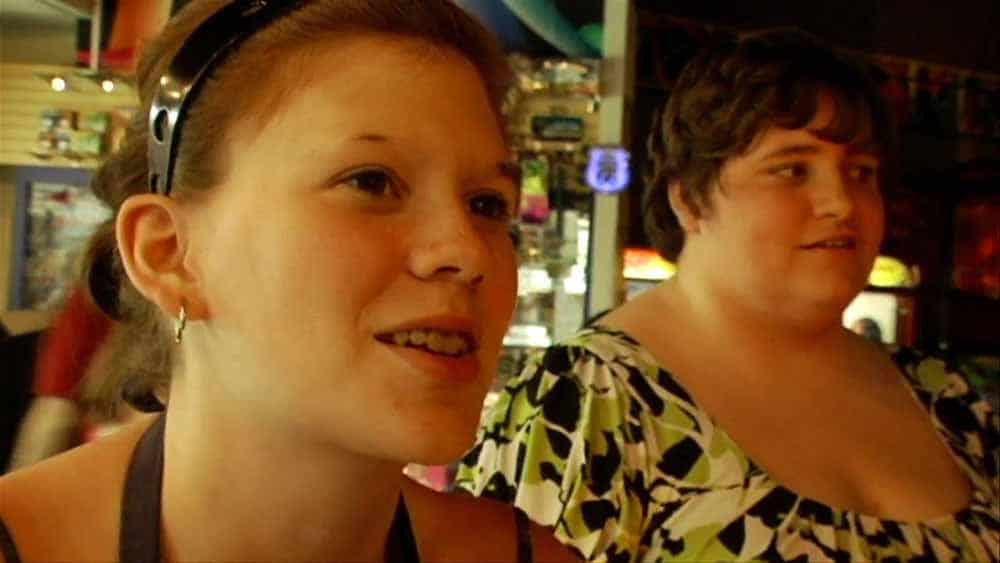
7R: Your films from Actress on incorporate the artifice into the text of the film itself, versus your earlier films, in which that artifice exists but isn’t actively explored. If you went back and made those early films now, how do you think you would make them differently?
Robert Greene: There’s this old idea that if you just train your camera on something, it’s okay to document it without acknowledging or intervening into it. Specifically, the homophobia and some of the racism in Fake It So Real. That’s an important document of the way people would talk in 2010, 2011. But it’s also an indictment of me as the cameraperson, and [cinematographer] Sean [Price Williams], because they don’t feel bad about saying any of this stuff around us, which means they believed we thought the same things. There’s something really interesting to explore there.
You’re not wrong when you say I incorporated artifice [in the later films], but I think it’s also incorporating moral and ethical uncertainty. It’s not as simple as [that] I recognise the artifice, and I’m telling you it’s a movie; therefore, I’m letting myself off the hook. It’s more like, starting with Actress, questioning, should we do this at all? This is what Kate Plays Christine is all about: I shouldn’t do this! Maybe making a documentary or creating images, in a broader sense, is just too easy. Maybe the most radical thing to do is to not tell a story, or to not tell a story in a traditional way.
To answer your question, I’m glad those other films are made like they are. But I would make them more about empowering the [participants]. Ultimately, [Fake It So Real] is really scathing in its portrait. I’m letting them ‘have enough rope to hang themselves’. I don’t know [if] that was helpful. When we screened the film [for the participants], and J-Prep — the [wrestler in the film] with a very large ass — says something racist, he was like, “Please take this out, please take this out.” All the other wrestlers were like, “Hell no, you keep that in, because people need to see the way people talk.” That speaks to the collaborative [element of the process], but it was still primordial in its development.
7R: I’ve watched a lot of creative nonfiction films where the filmmaker is very transparent by displaying the entire process that goes into making the film within the film itself.
What was interesting about Actress and Kate Plays Christine is you leave it very ambiguous about what’s actually going on behind the scenes. Who’s making what decisions? Who has the power here? We’re not really sure how that collaboration is functioning. Why do you find it interesting to leave that ambiguous?
Robert Greene: For me, it’s because those questions are all apparent in the construction of the film. The first image of Actress: [Brandy has] her back to the camera, it’s artificially lit, and it’s in slow motion. She’s speaking in sort of metaphorical terms about a role that she’s played in a TV show and how it reflects her real life. It’s artifice on top of artifice on top of artifice. You don’t have to say, here’s the process.
To me, that film is a two-hander between the camera — me — and Brandy. The questions that I found myself interested in were: How does performance tell you what is real? What’s exploitive about the process? How are social performances captured by the camera? All these things were much, much more interesting if you had to be questioning the whole time. Someone wrote one time that it’s a film that’s always thinking, and I really appreciated that. I really think what that means is it asks you to constantly think, why am I watching this? That’s why I love it maybe more than almost anything else I’ve ever done, because I think it’s a more sophisticated viewing experience.
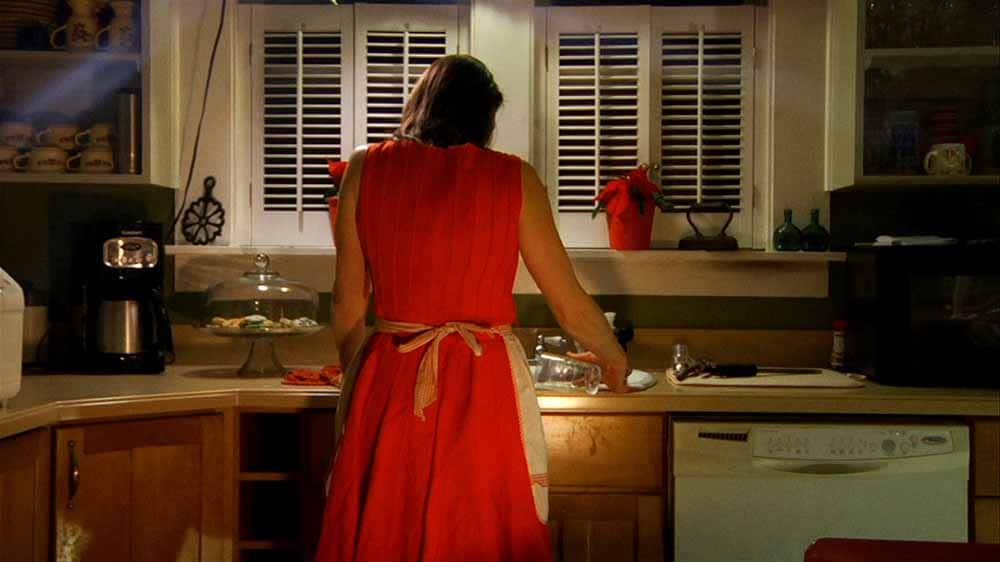
7R: I think it’s very true that you’re always thinking while watching Actress. It was definitely true for me. With a lot of your films, especially with Actress, I was also always asking myself, do I feel uncomfortable watching this? How do I feel about this, morally? But I also got the sense that the films wanted me to ask that.
Robert Greene: Yeah, they do. And the biggest thing is, Brandy is a woman who is very aware of how she’s looked at, and you’re watching a male gaze camera literally staring at her for ninety minutes. It’s challenging, because you can see how comfortable she is. But the things that she’s talking about in the film itself are literally one instance of male gaze after another.
I don’t want to be essentialist about this, but I think you can tell that a man is holding the camera by the way I shoot the film. I think it would be filmed differently if it was a woman holding the camera. That would be a very interesting thing. How would Brandy relate to another woman holding the camera? In fact, I had an idea one time to remake the entire film, but have one of my former students remake everything from her perspective. How would that change the entire film?
I’m definitely interested in the performance of gender, but after Kate Plays Christine, I did realise, I don’t really need to make films that are about the male gaze anymore. That’s pretty 1970. It might have been fascinating to me, and I think we did something with Actress. It was a little bit more of a failure in Kate Plays Christine. That stuff is in that film, too, but I don’t think it’s as interesting. I sort of abandoned that idea, mostly out of recognition of, who cares? Who cares what I think about [being a] man [behind the camera]? Just make better movies and make films where you’re not hurting people.
In Actress, I’m still very interested in the provocative act of filming. There was a diminishing result for that. It was very self-destructive. Kate Plays Christine is all about self-contempt. That’s made by a person who hates himself, frankly, and maybe not just himself, but hates the world. I was probably very depressed when I was making that film. I know Sean was. We were all dealing with direct suicide in our lives at the time. It was a very, very difficult film to make, psychologically. It was an act of burning down the whole idea of storytelling and the whole idea that I should make movies. The attempt afterwards has been to build back up.
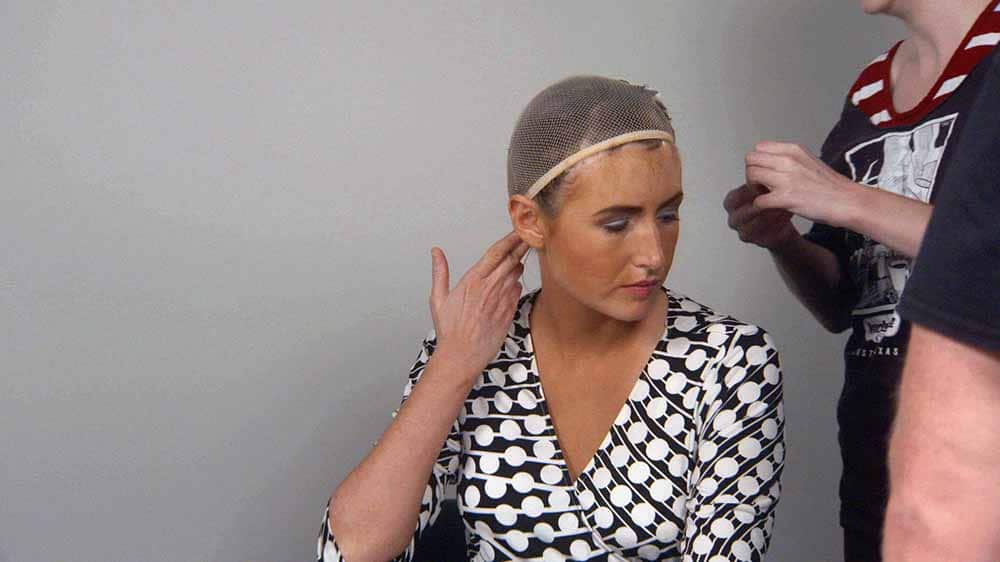
7R: We’ll talk in a bit about how filmmaking can be a healing process. Do you feel like Kate Plays Christine was almost the opposite?
Robert Greene: When you think about filmmaking as a healing process, I realised that that’s what the performative aspect that I was interested in from the beginning is ultimately really about.
There’s an important book called The Body Keeps the Score, which is all about what our bodies actually do with trauma. We store it in our bodies, and we can’t talk it out. Talk therapy can only go so far. You have to act out things. I think that that includes having a camera on you in a documentary sense. Kati was literally in a desperate situation, and that camera was very validating for her. The fact that her brother wanted to make a film about her was very validating, and Sean’s attention on her was very validating. You could see it in the film. That’s therapeutic, considering the intense poverty that she was dealing with.
I didn’t know how to tap into that. I didn’t know what that meant. I didn’t know if I even believed that at the time, because maybe I was a little too cynical to believe it. It’s the same thing with the guys in Fake It So Real. Certainly, [it was the] same thing with Brandy. Brandy changed her life partly because of the camera that was on her. For years, I had guilt about that. Did I cause a problem? In fact, I don’t have guilt about it now because she’s happier! She literally wasn’t happy, and Tim wasn’t happy, frankly. The kids were happy, because they’re both really good parents. But everyone’s happier now.
We make jokes all the time [about how] documentary filmmakers are therapists. Well, it’s not just because we’re there to listen. It’s because the camera itself creates a validation of experience. And then, you’re acting out how you feel. When she’s walking around in slow motion and having this actor experience in her own life, that is incredibly therapeutic.
It took me way too long to realise the power of that. Kate Plays Christine would have been such a better film if [I had realised that]. In Kate Plays Christine, I wanted to conjure the feeling of depression, instead of conjuring the feeling of healing. To me, it was important to talk about depression in a way that was a visceral feeling, not using words or narratives. The whole point of Kate Plays Christine is that the narratives fail. We can’t explain it.
But because [the film is] so self-obsessed, it doesn’t go anywhere with that. A lot of people misread the ending as indicting the audience. The ending is indicting me and Sean. The best part of that film, besides Kate’s [Kate Lyn Sheil] amazing performance, which I think is still extraordinary, is the interviews with those actors about how therapeutic it was for them to talk about their own experience filtered through the lens of Christine Chubbuck. I didn’t know enough to do anything with that. I didn’t believe in it. It was too self-destructive of a film.
Continue reading this interview with Robert Greene (Procession) in Subjective realities
In the rest of the interview, Robert Greene talks about how his dejection after Kate Plays Christine lead to Bisbee ‘17, in which he first started consciously playing with the therapeutic properties of filmmaking. He then talks about how that developed into Procession, and why he hired a drama therapist for that film.
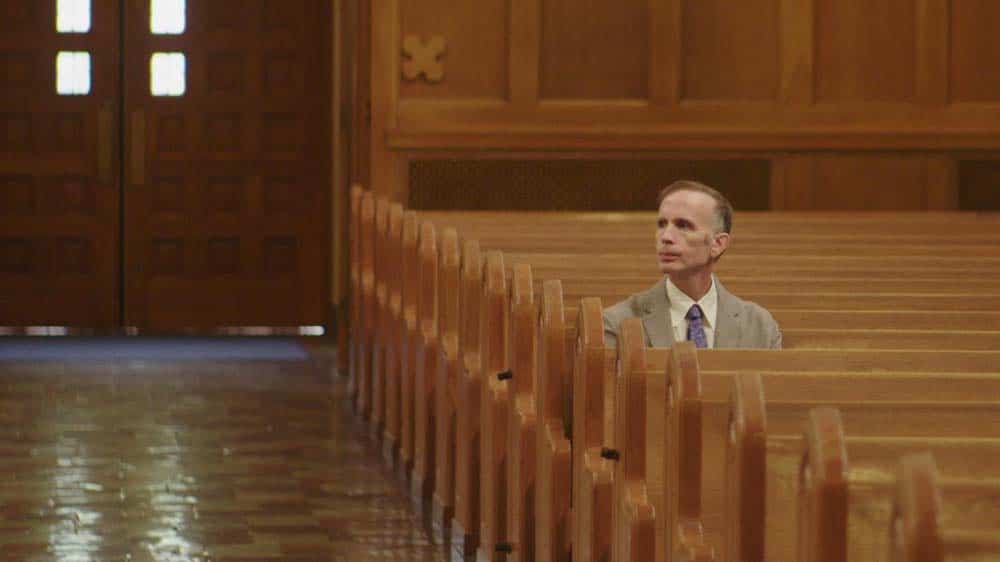
Here’s a brief section of Greene talking about Procession: “What a wonderful payoff from the cynicism of Kate Plays Christine. Guess what, storytelling might be corrupt, but making art together can be very healing. Both things can be true, but I want to make the world work better. I don’t believe, as a traditional idea, that documentaries can make the world a better place. I don’t know that they affect the world directly that much. I do know that they affect the people that watch them, and they affect the people that are in them.
Most importantly, to me, the films now have to be about the future. If you’re going to intervene into someone’s life, you need to be thinking about what that intervention is going to do for them to make their lives… maybe not better, but have a different meaning in the future. You need to be very, very, very aware of the power of that intervention. I’ve been trying to say that from the beginning, I just didn’t know how.”
Subjective realities: The art of creative nonfiction film also features interviews with great nonfiction filmmakers such as Kirsten Johnson, Joe Bini, Gillian Armstrong, Mina Shum, Zia Anger, Jonas Poher Rasmussen, and more. Get your copy of Subjective realities here.
